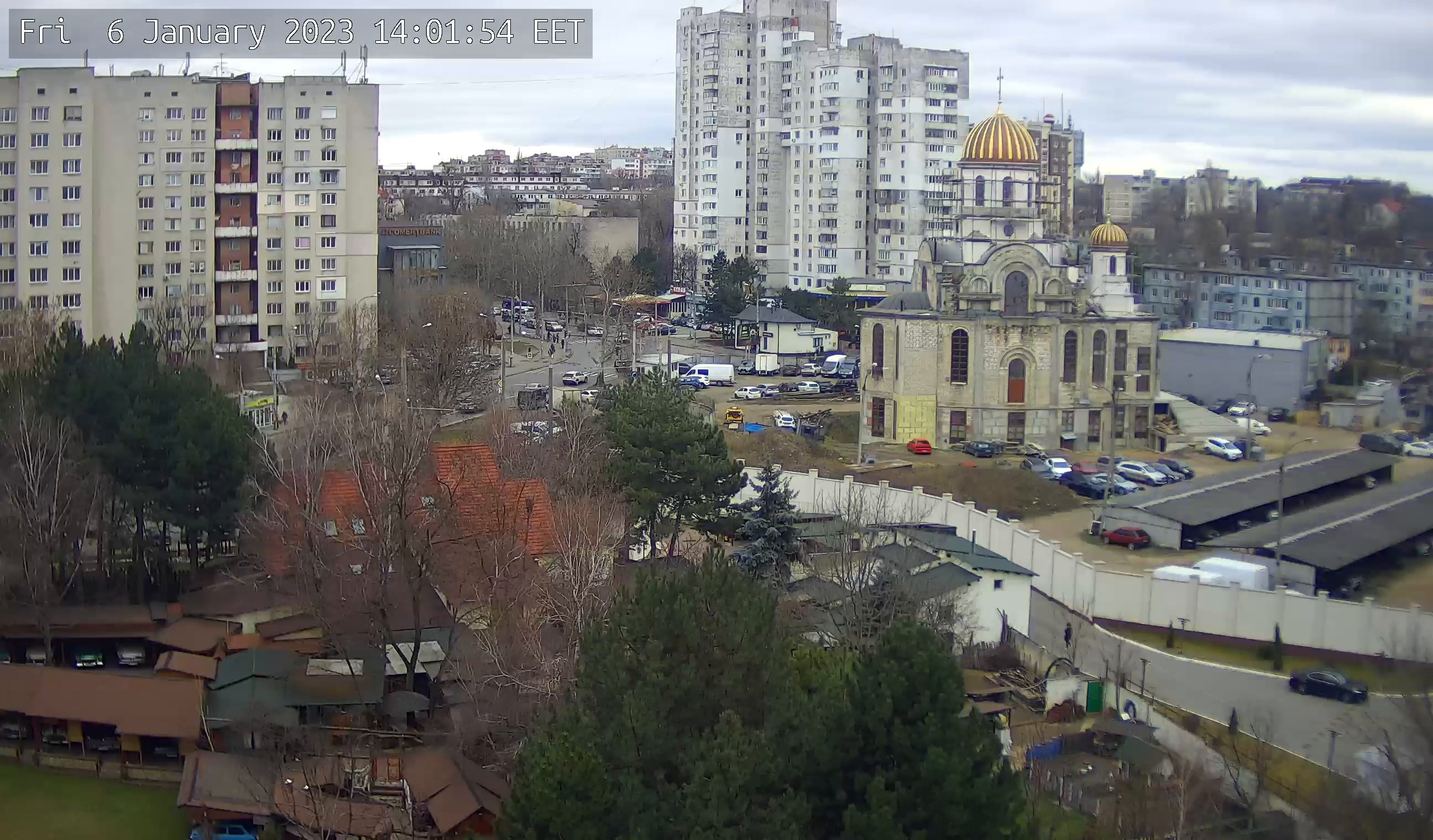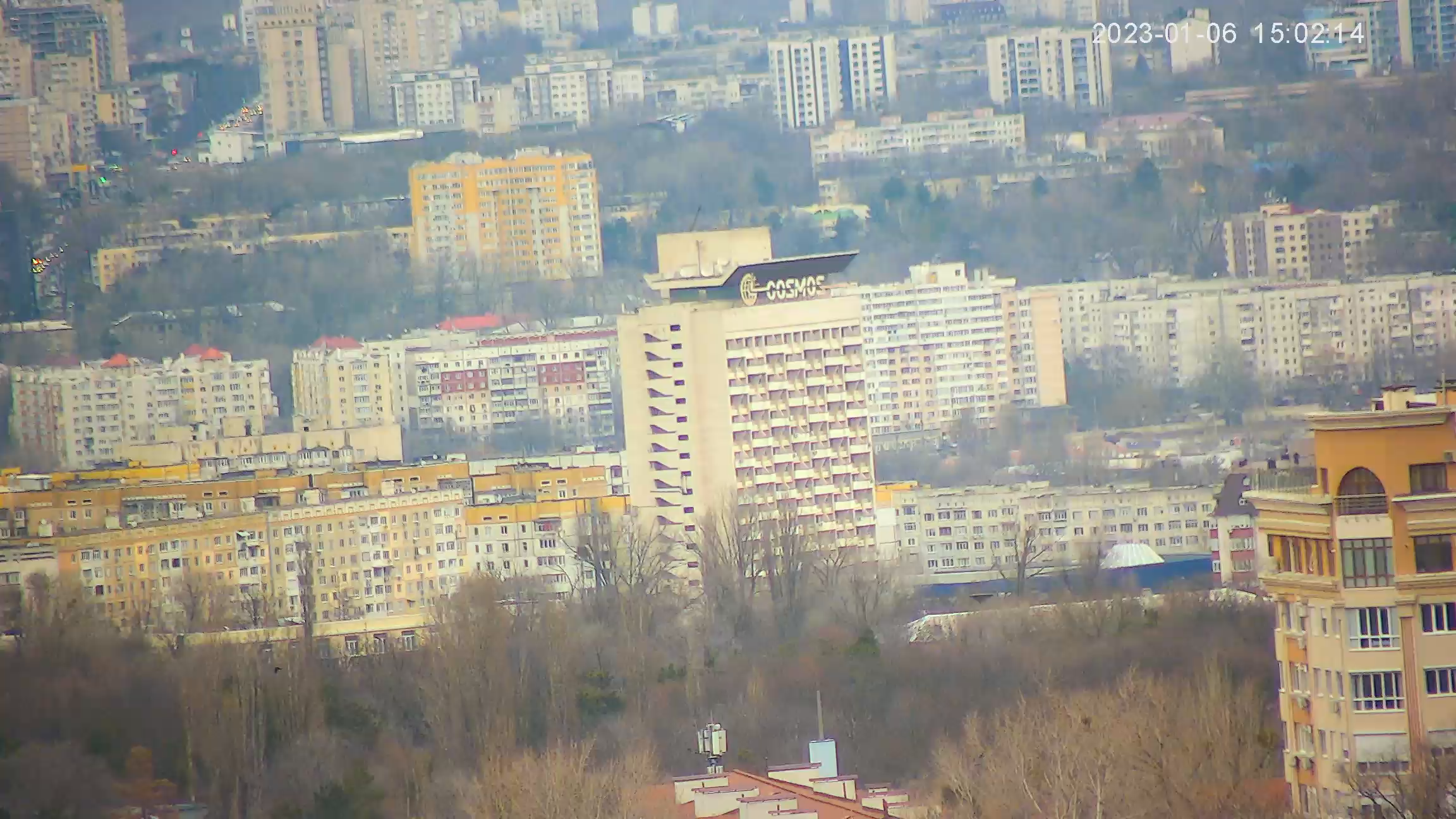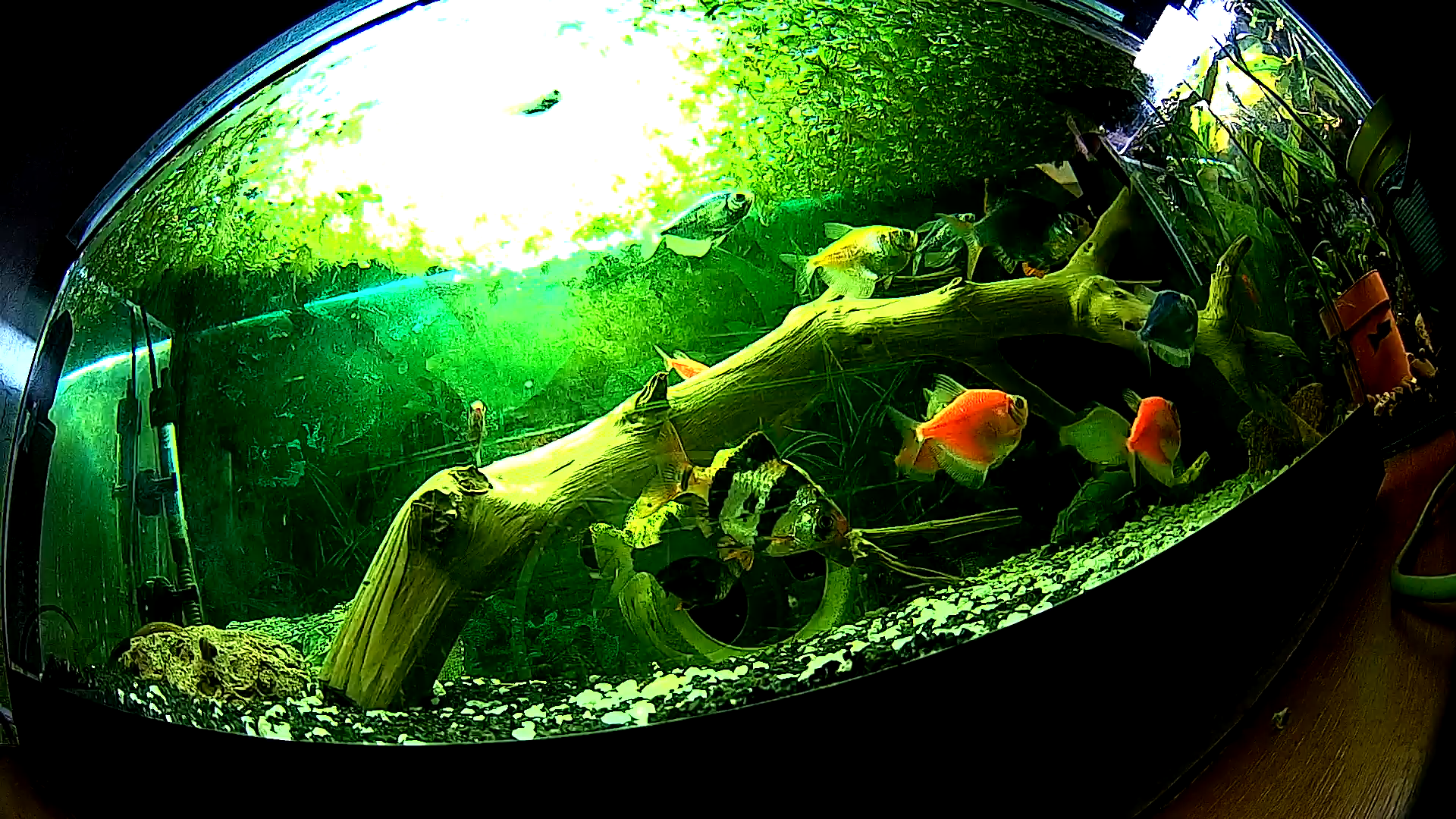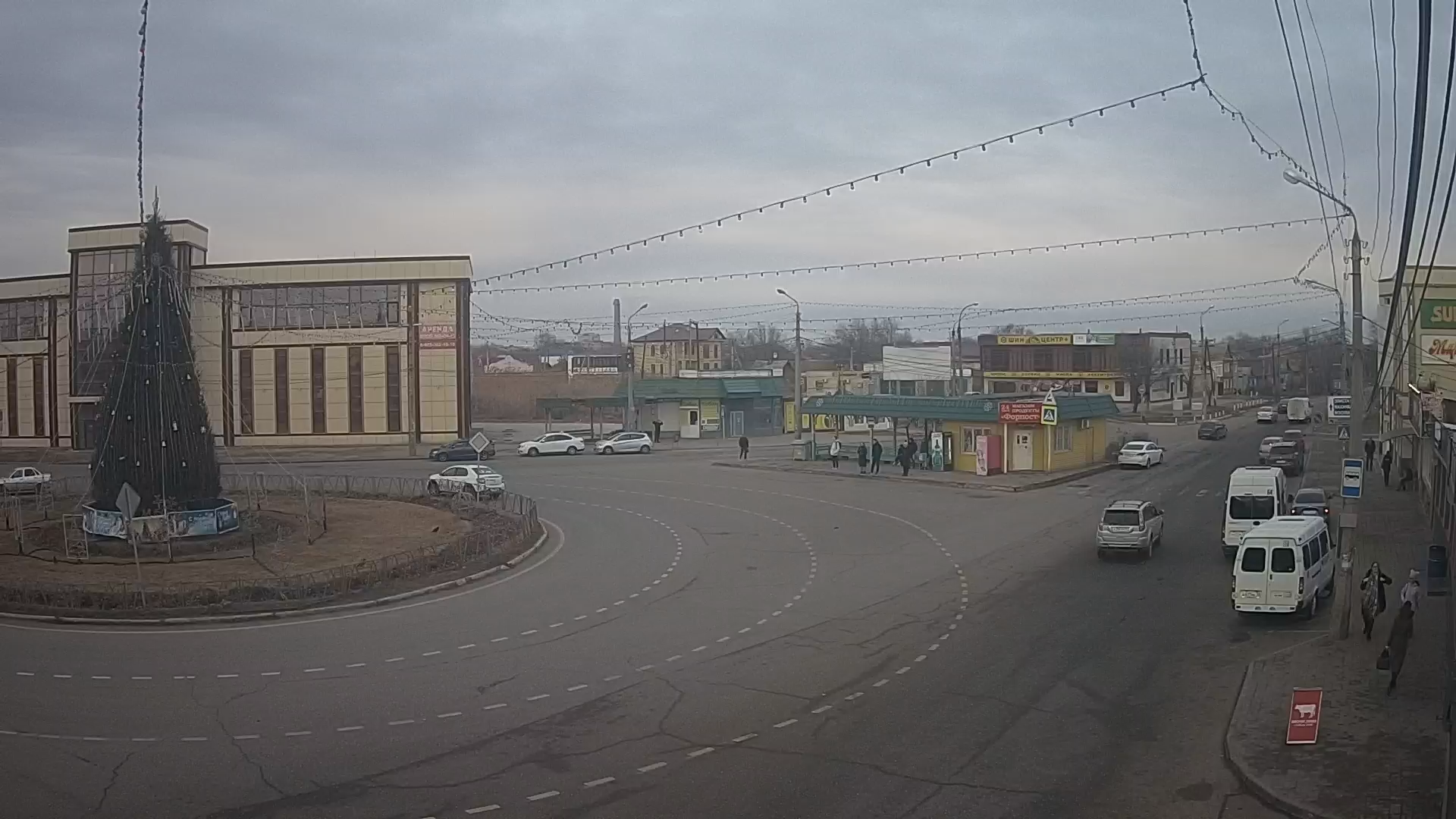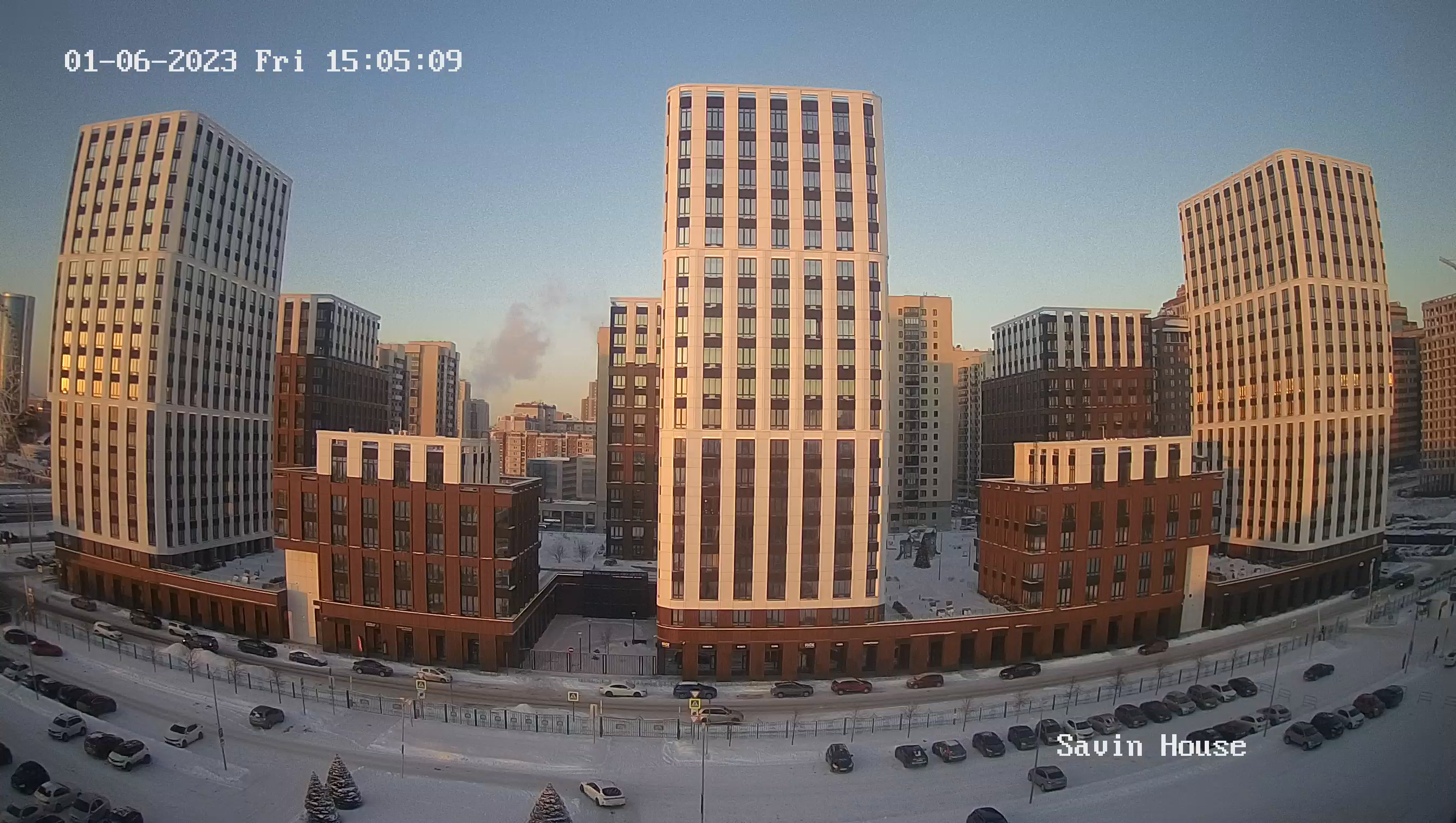Online camera Krasnoyarsk. Dubrovinskogo street, Paris Commune street
Dubrovinsky Street is located in the Central and Zheleznodorozhny districts of Krasnoyarsk.
Since 1866 a section of present-day Dubrovinsky Street east of Ostrozhnaya Street (now Person Street) to the area of the old market on Strelka was called Beregovaya Street, and the section from Ostrozhnaya Street to the city park since 1881 was called Novo-Kuznechnye Ryady.
Street Beregovaya and Novo-Kuznechnye Ryady stretched along the left bank of the Yenisei. At that time the bank was completely unimproved. It was very uncomfortable to walk here, admiring the beauty of the Siberian river. Only in 1871 A.P.Kuznetsov, a goldsmith, being the mayor, arranged a 200 sazhens quay for walks of townsfolk from Dubensky lane (nowadays Paris Commune street) to Priyutsky lane (nowadays Surikov street). In 1912 by the decision of the City Council in honor of the celebration of the 100th anniversary of the Patriotic War of 1812 it was proposed to name this section of the embankment Alexandrovsky Boulevard (in honor of the Emperor Alexander I).
In the area where the river station is located today, in 1913 were built under the street city storerooms. They have partially survived to this day. At that time, they also served as a viaduct and retaining wall. Above the storerooms was equipped with a boulevard with metal railings, and a staircase was built, which led to the ferry piers with brick parapets and concrete-mosaic platform.
During the years of Soviet power in the spirit of the revolution Novo-Kuznechny Ryad and Beregovaya Street were renamed October Street in 1921, and in 1936 was named after Yakov Fedorovich Dubrovinsky (1882 - 1918), an active participant in the struggle for Soviet power in the Yenisei Gubernia.
In Soviet times the Yenisei embankment and Dubrovinsky Street underwent major reconstruction.
In 1952 the building of Dubrovinsky street was constructed according to the project of architect A.N.Golubev, the model of which in 1958 was awarded a silver medal and certificate of honor at an international exhibition in Brussels.
In 1956, the embankment near the river station was asphalted and landscaped. In the early 1960's on Dubrovinsky began erecting high-rise buildings instead of the old, mostly wooden buildings. In 1960, the State Bank building in the Stalin Empire style (70 Dubrovinskogo St.) was erected upon the project of M. Merzhanov.
Only two pre-revolutionary buildings on this street are extant: the building of the Krasnoyarsk Regional Museum, stylized like an ancient Egyptian temple, designed by architect L.Chernyshev (Dubrovinskogo St., 84), and the building of the police department (now houses Krasnoyarsk Intermunicipal Department of Ministry of Internal Affairs of Russia, 72 Dubrovinskogo St.).
From the mid-1970s to the 1980s the 9 and 16 story apartment blocks were built at the beginning of the street. They became the dominant feature of the historical part of the city, but like other similar faceless "boxes", built at the same time on the USSR Constitution and Republic streets, significantly changed and spoiled the appearance of Krasnoyarsk.
The Dubrovinsky street stretches along the Yenisei embankment for five kilometers from Strelka to the fourth road bridge. It offers magnificent views of the Yenisei, bridges and foothills of the Sayan Mountains.
On this street you can find apartment buildings with different layouts: "Stalinka", "Khrushchevka", "improve" series of KZh and "new layouts". Buildings number 1 "G" and number 100 are of modern architecture. They contain large-size apartments with a beautiful view of the Yenisei and the mountains.

